Yoga for PCOD
by Hardik Mehta
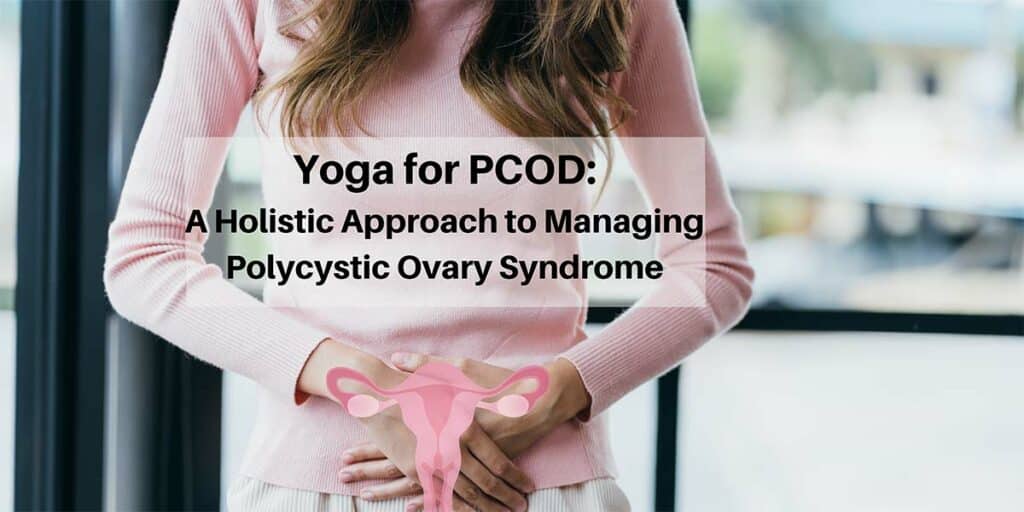
Polycystic Ovary Syndrome (PCOD) is a common hormonal disorder that affects women of reproductive age. This condition presents with irregular menstrual cycles, elevated androgen levels, and the presence of polycystic ovaries. PCOD can lead to various complications such as infertility, weight gain, acne, and excess hair growth. While there is no cure for PCOD, lifestyle changes including diet, exercise, and stress management can help manage its symptoms. Yoga, with its emphasis on holistic well-being, can be a beneficial practice for women with PCOD.
The Role of Yoga in Managing PCOD

Yoga, rooted in ancient traditions, seamlessly intertwines physical postures, mindful breathing techniques, meditation, and profound mindfulness practices. It is known for its ability to improve overall health and well-being by promoting balance and harmony in the body and mind. For women with PCOD, yoga can offer several benefits:
- Hormonal Balance: Certain yoga poses, known as asanas, can help stimulate the endocrine system and promote hormonal balance. Poses such as Bhujangasana (Cobra Pose), Dhanurasana (Bow Pose), and Ustrasana (Camel Pose) can be particularly beneficial for women with PCOD.
- Stress Reduction: Stress can exacerbate PCOD symptoms by increasing cortisol levels, which can further disrupt hormonal balance. Yoga, with its focus on relaxation and mindfulness, can help reduce stress levels and promote a sense of calm and well-being.
- Improved Circulation: Yoga practices such as pranayama (breathing exercises) and asanas can improve blood circulation, which is important for women with PCOD as this treatment aids in restoring regular menstrual patterns and mitigating the likelihood of complications like heart disease and diabetes.
- Weight Management: Many women with PCOD struggle with weight gain, which can worsen symptoms and increase the risk of complications. Yoga, when combined with a healthy diet, can be an effective tool for managing weight and improving overall health.
- Improved Mood and Energy Levels: PCOD can take a toll on mental health, leading to mood swings, depression, and fatigue. Yoga embodies a holistic approach, seamlessly blending physical postures, specialized breathing methods, the art of meditation, and the cultivation of mindfulness.
Yoga Practices for PCOD
Yoga is a holistic practice that combines physical postures, breathing techniques, meditation, and mindfulness. It can help improve hormonal balance, reduce stress, and promote overall well-being, making it an ideal practice for women with PCOD.
If you have PCOD, incorporating yoga into your daily routine can be beneficial. Below are a variety of yoga asanas that you can explore and incorporate into your routine:
- Surya Namaskar (Sun Salutation):
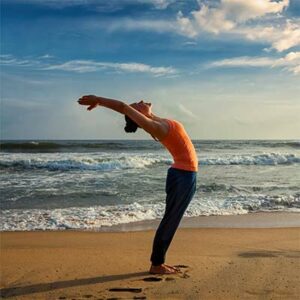
This sequence of asanas can help improve flexibility, strengthen the muscles, and stimulate the organs, including the ovaries.
- Vajrasana (Thunderbolt Pose):
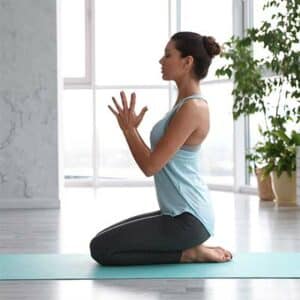
Vajrasana may help manage PCOD symptoms by improving blood circulation, aiding digestion, reducing stress, balancing hormones, supporting weight management, and enhancing ovarian function.
3. Baddha Konasana (Bound Angle Pose):
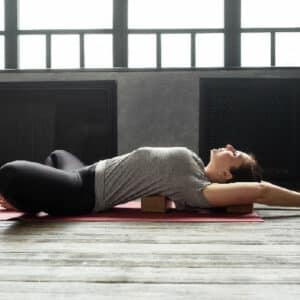
This pose can help open up the hips and groin area, which can be tight in women with PCOD.
4. Nadi Shodhana (Alternate Nostril Breathing):
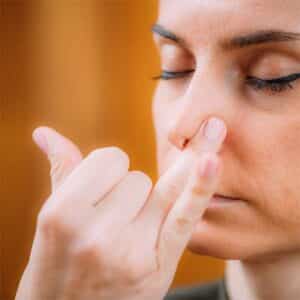
This pranayama technique can help balance the nervous system and reduce stress levels.
5. Matsyasana (Fish Pose):
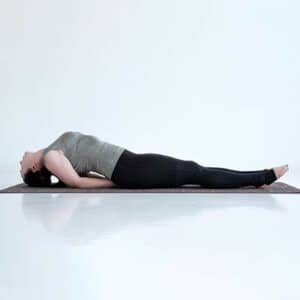
This pose can help stimulate the thyroid gland and improve metabolism, which can be beneficial for women with PCOD who may have thyroid issues.
6. Bhujangasana (Cobra Pose):
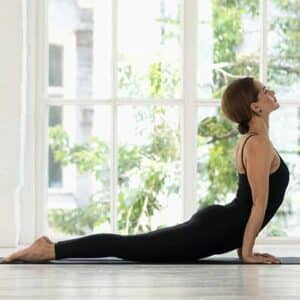
Bhujangasana is a gentle backbend that can help stimulate the ovaries and uterus, improving blood flow to the pelvic area. It can also help relieve stress and fatigue, common symptoms of PCOD. To perform Bhujangasana, lie on your stomach with your palms flat on the floor under your shoulders. Inhale as you lift your chest off the floor, keeping your elbows close to your sides. Hold the pose for a few breaths, then exhale as you lower back down. Repeat several times, gradually increasing the duration of the pose.
7. Dhanurasana (Bow Pose):
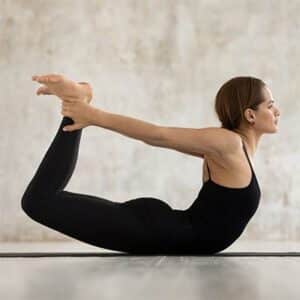
Dhanurasana is another backbend that can help stimulate the reproductive organs and improve digestion, both of which can be beneficial for women with PCOD. It can also help strengthen the back muscles and improve posture. To perform Dhanurasana, lie on your stomach with your arms by your sides. Bend your knees and reach back to grasp your ankles. Inhale as you lift your chest and thighs off the floor, creating a bow shape with your body. Maintain the position for a brief moment, then gradually release while exhaling and returning to your starting position. Repeat several times, gradually increasing the duration of the pose.
8. Ustrasana (Camel Pose):
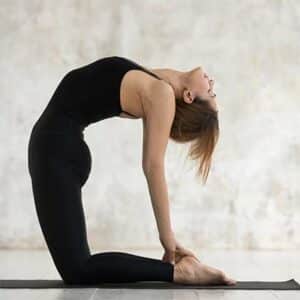
Ustrasana is a deep backbend that can help improve blood circulation to the pelvic area and stimulate the ovaries and uterus. It can also help improve posture and relieve stress and anxiety. To perform Ustrasana, kneel on the floor with your knees hip-width apart. Position your hands on your lower back to provide additional support and stability. Inhale as you lift your chest towards the ceiling, arching your back and reaching your hands towards your heels. Maintain the position for a brief moment, then gradually release while exhaling and returning to your starting position. Repeat several times, gradually increasing the duration of the pose.
9. Janu Sirsasana (Head-to-Knee Pose):
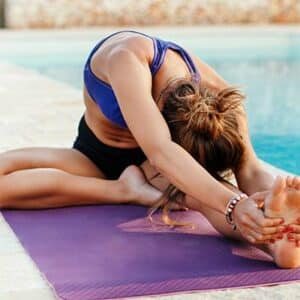
Janu Sirsasana is a seated forward bend that can help stretch the hamstrings and lower back, improving flexibility and relieving tension in the pelvic area. Additionally, it has the potential to soothe the mind, easing feelings of stress and anxiety. To perform Janu Sirsasana, sit on the floor with your legs extended in front of you. Bend your right knee and gently rest the sole of your right foot against the inner thigh of your left leg. Inhale as you lengthen your spine, then exhale as you hinge forward from the hips, reaching towards your left foot with both hands. Hold the pose for a few breaths, then inhale as you lift back up. Repeat on the other side.
10. Setu Bandhasana (Bridge Pose):
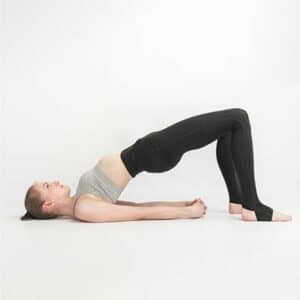
Setu Bandhasana is a gentle backbend that can help stretch the chest, neck, and spine, improving flexibility and relieving tension in the pelvic area. Moreover, it possesses the ability to calm the mind, diminishing both stress and anxiety levels. To perform Setu Bandhasana, lie on your back with your knees bent and your feet flat on the floor. Inhale as you lift your hips towards the ceiling, pressing into your feet and engaging your glutes. Maintain the posture for several breaths, then exhale slowly as you descend back to your original position. Repeat several times, gradually increasing the duration of the pose.
While yoga cannot cure PCOD, it can be a valuable tool for managing its symptoms and improving overall health and well-being. By incorporating yoga into your daily routine, along with other lifestyle changes such as a healthy diet and stress management, you can take a holistic approach to managing PCOD and lead a healthier, happier life.
Embark on a transformative journey with Sayujya Yoga’s comprehensive 200-hour Yoga Teacher Training Course in Mumbai. Our program goes beyond traditional yoga practices, addressing lifestyle modifications beneficial for PCOD management. With a focus on holistic wellness, our curriculum includes Yoga Alliance courses in Mumbai, equipping you to teach yoga effectively. Located in Ghatkopar East, our yoga school provides a supportive environment for learning and growth. Join us to explore the healing potential of yoga and empower yourself to make positive changes in your life and others.
About the Author
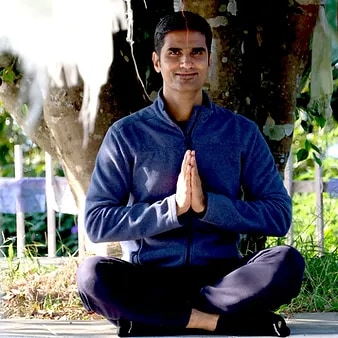
Hardik Mehta
Hardik is an E-RYT 500 & YACEP (Yoga Alliance Continuing Education Provider), Yoga Alliance, USA. He has been practicing yoga for the last 9 years. Prior to finding his true calling in Yoga, he was working with various corporates for 12 years in the Retail and eCommerce sector.
